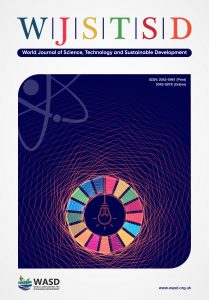Transforming Slums Through Urban Intensification, Khalafalla Omer, Dr. Athina Moustaka and Dr. Gregory Watts
 Khalafalla Omer
Khalafalla Omer
PhD Researcher in Built Environment, School of Science, Engineering & Environment
The University of Salford
United Kingdom
Email: k.s.o.khalafalla@edu.salford.ac.uk
Dr. Athina Moustaka
Lecturer in Architecture, School of Science, Engineering & Environment
The University of Salford
United Kingdom
Email: a.moustaka@salford.ac.uk
Dr. Gregory Watts
Director of Quantity Surveying Program, School of Science, Engineering & Environment
The University of Salford
United Kingdom
Email: g.n.watts@salford.ac.uk
Background: Urban intensification is a planning and redevelopment approach using land readjustment and redevelopment planning tools. It optimises the land in effective ways to accommodate urban growth in specific urban areas to ensure a sustainable urban environment. The argued advantages include urban sprawl control, urban land utilisation, reduction of land development cost, and the creation of compacted neighbourhoods.
Methods: Based on a critical literature review, the paper examines the upgrading process of three informal settlements using a qualitative logical framework related to land location, property markets and development codes; such a logical framework can enhance the main urban factors that impact the upgrading process in developing cities. Most urban intensification platforms in developing countries neglect the role of the property market in the utilisation that financial resources can mediate the land and development resources available for redevelopment.
Results: Urban expansion includes targeted slum dwellings through vertical expansion where there is no available greenfield land, and horizontal expansion in terms of available greenfield land; the development process must ensure accessible public amenities and pedestrian-friendly residential settlements. The property market platform must introduce housing finance that works for the urban poor and informal workers through fair interest rates, mortgage terms and down payment rates. They must create an appropriate partnership between private, public, and slum dweller sectors to ensure the accessibility of urban poor to redevelopment settlements while approaching inclusive development outcomes. It should take appropriate allocation of land value capture to ensure cost-efficient development processes into consideration. The planning and redevelopment process must ensure an appropriate land development code that makes use of available labour and worker skills in the construction process while utilising the housing area to ensure affordable housing units. There should also be a land readjustment plan that would allow liveable and well compacted residential settlements.
Conclusions: Developing cities face challenges of rising informal settlements. Many upgrading schemes have resulted in overpriced housing units, lack of public amenities and exclusion development schemes. Such outcomes have impacted the accessibility of slum dwellers to the slum redevelopment projects, causing many to lose their economic and social networks due to relocation, while the beneficiary groups lack access to decent public services. These situations require urban intensification that would utilise financial, human and land resources. Because of this, many lessons have been learned; specifically, that land value capture, housing financial markets, urban expansion and development codes can be driven by the three case studies of Kibera, Lideta and Dharavi to ensure a better quality of residential settlements.
Keyword: Slum Upgrading; Land Readjustment; Urban Intensification; Property Market.
Citation: Omer, K., Moustaka, A., Watts, G. (2022): Transforming Slums Through Urban Intensification. World Journal of Science, Technology and Sustainable Development (WJSTSD), Vol. 19, No. 1, pp. 55–66.

